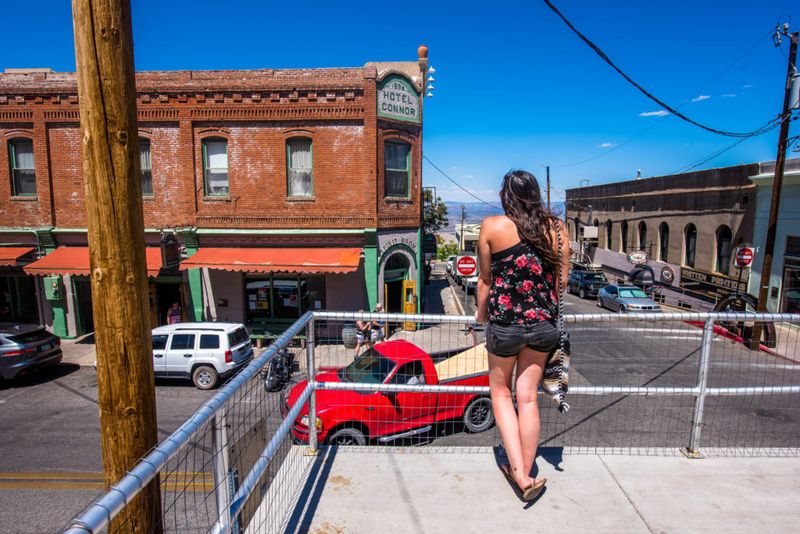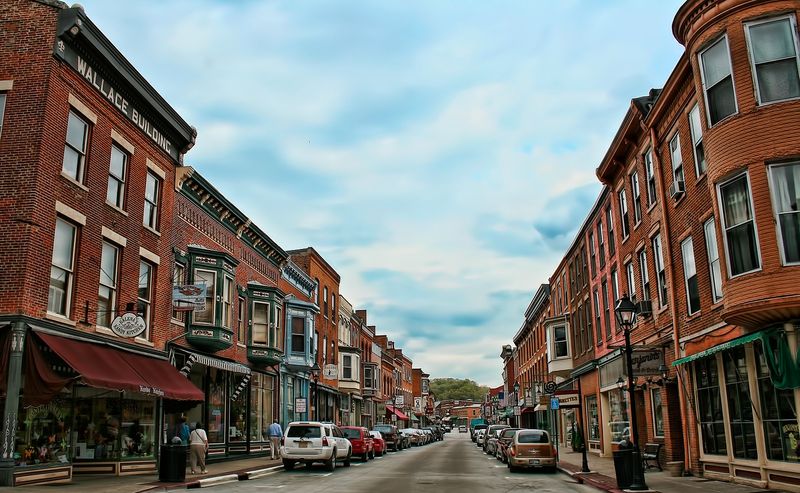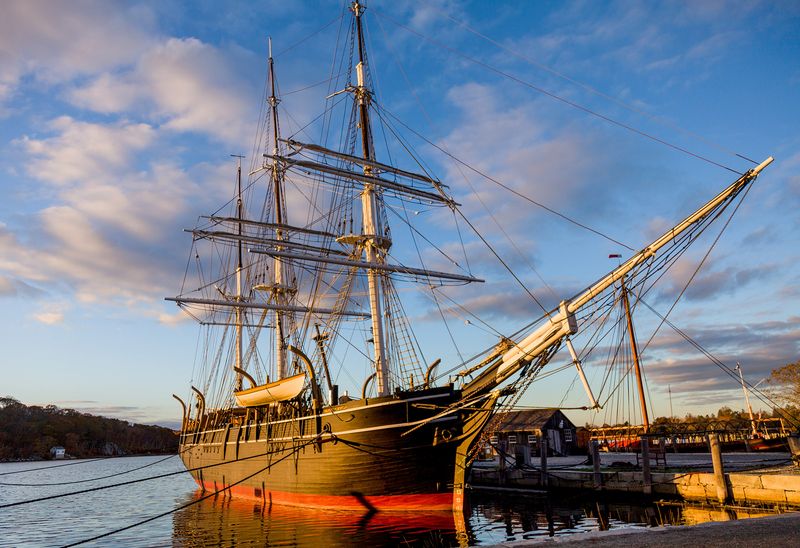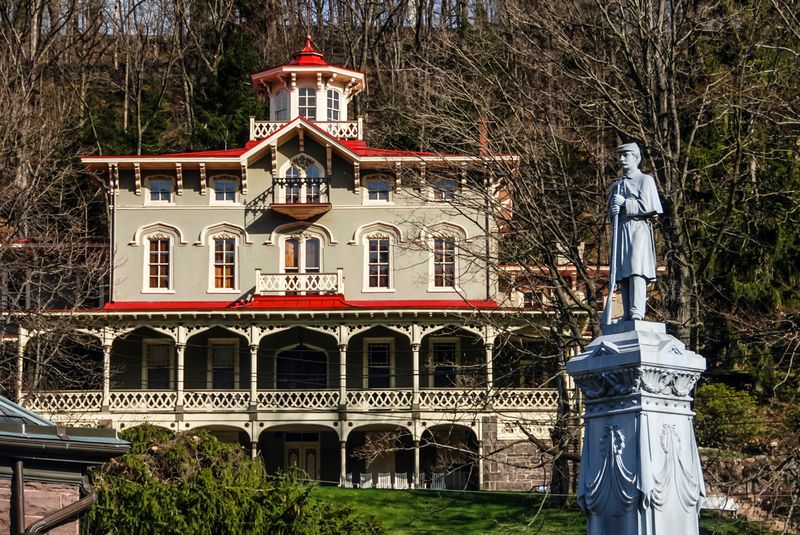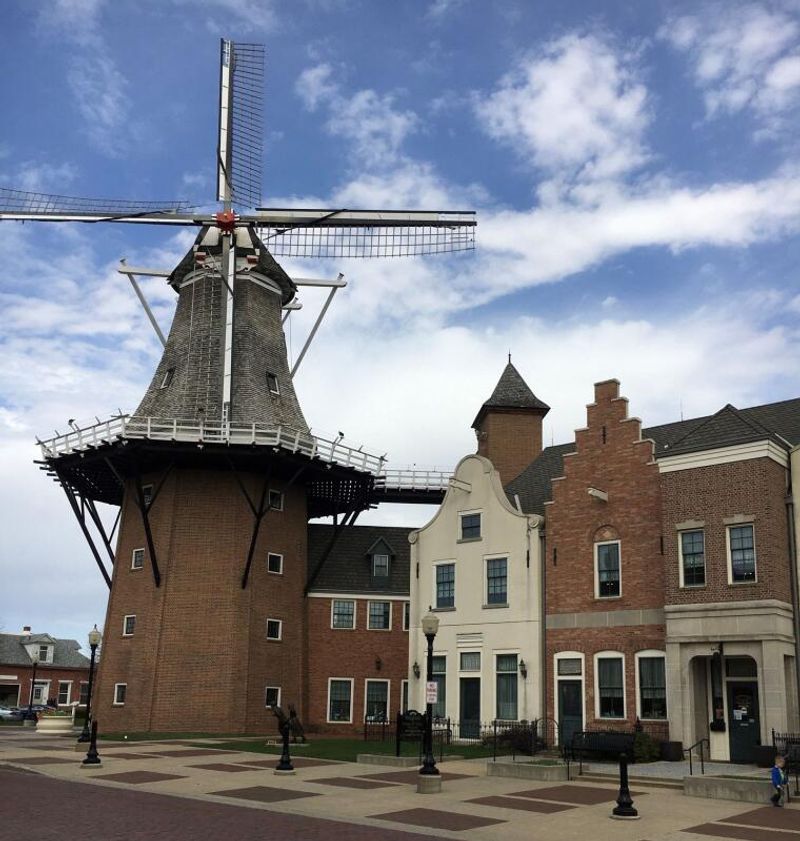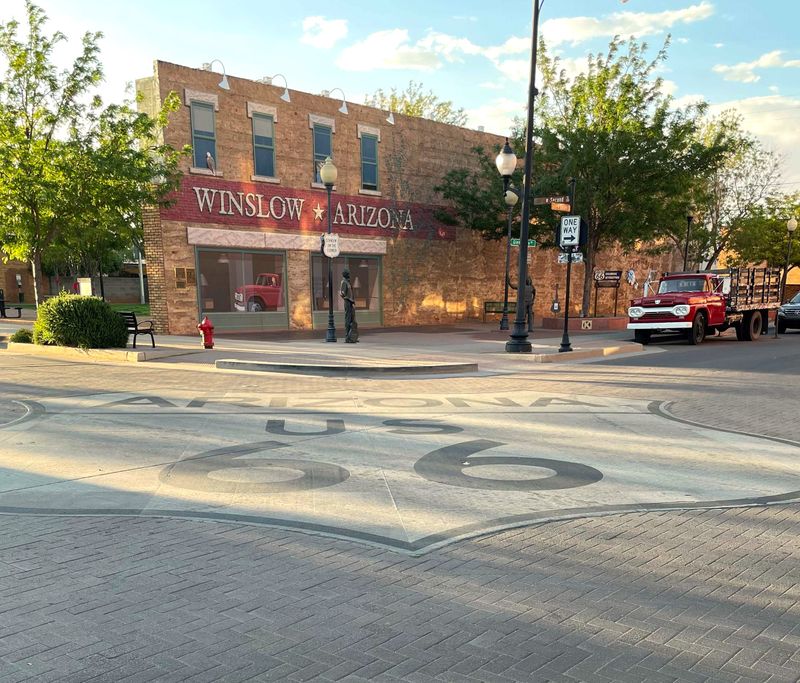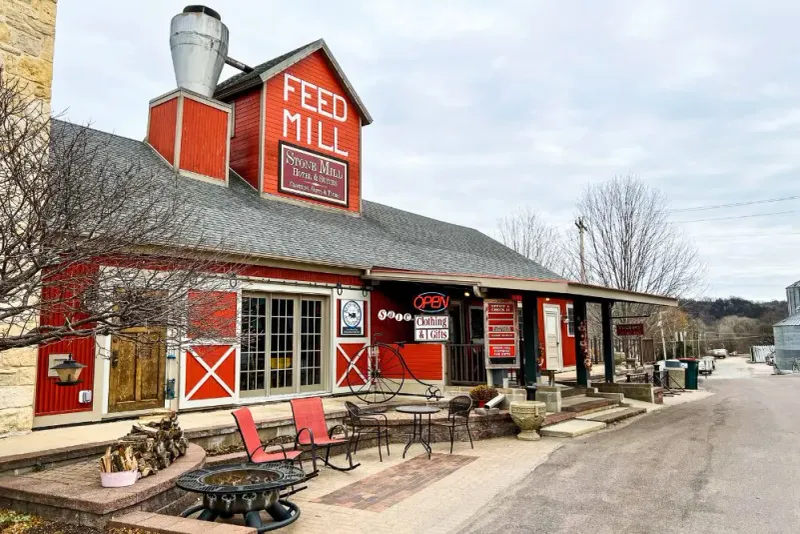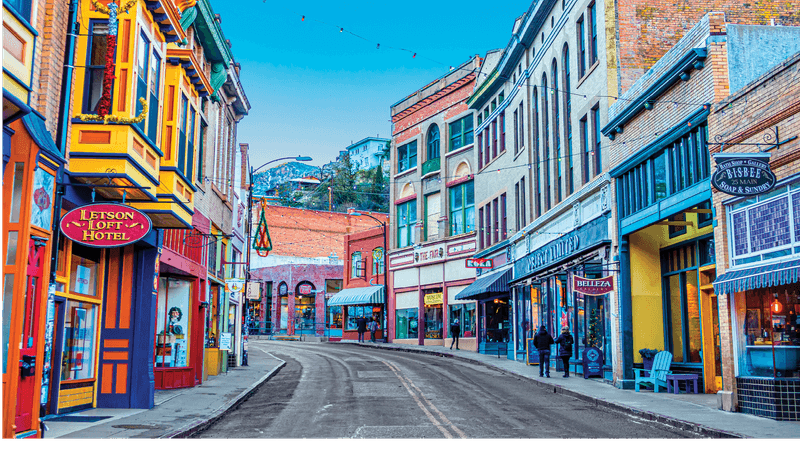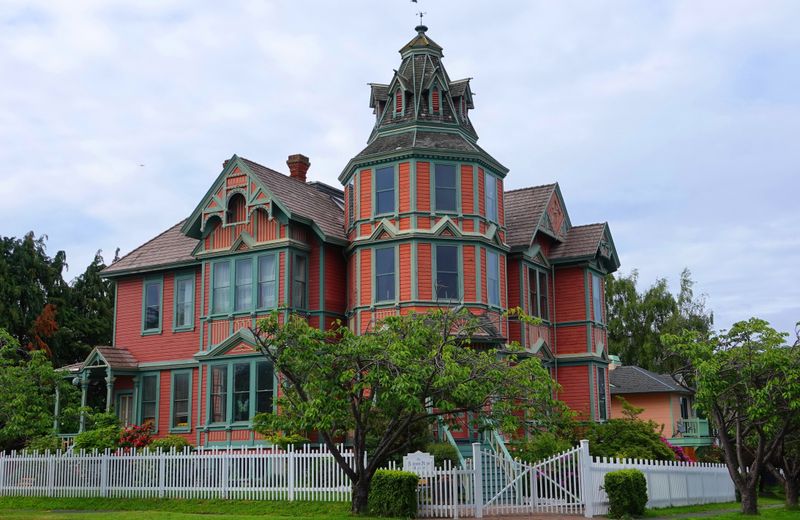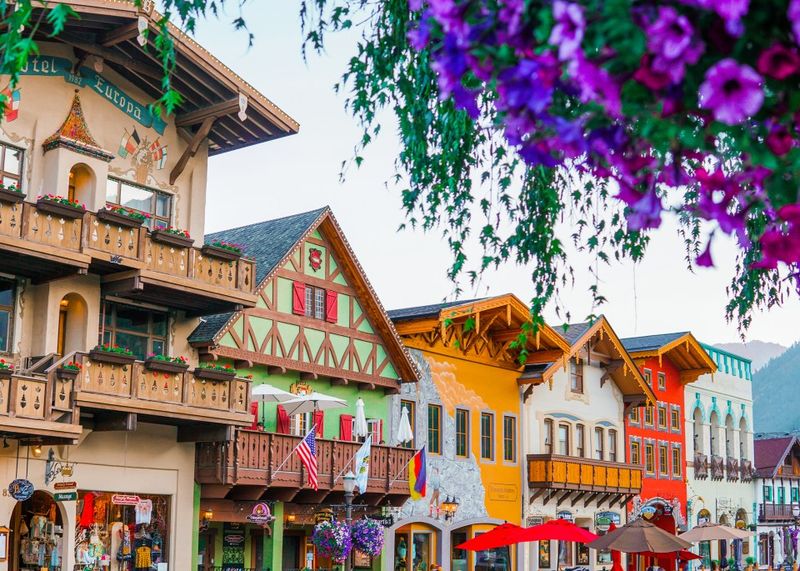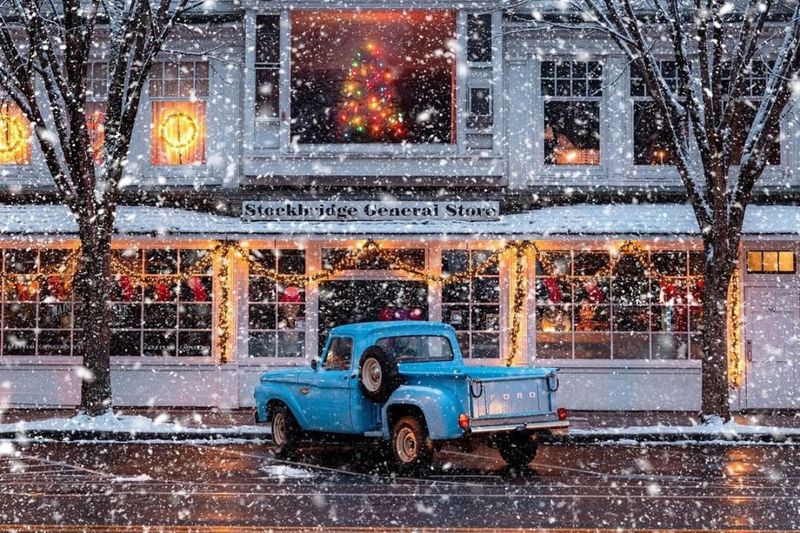Tucked away from bustling cities and modern developments, some American towns have managed to preserve their historic charm and character. Walking down their streets feels like stepping through a portal to another era, where vintage storefronts, classic architecture, and traditional ways of life continue uninterrupted. For travelers seeking an authentic glimpse into America’s past, these remarkable small towns offer living history without the need for a time machine.
1. Jerome, Arizona: The Mining Town That Refuses to Fade
Perched precariously on Cleopatra Hill, Jerome has transformed from the “wickedest town in the West” to a preserved slice of mining history. The town’s wooden buildings seem to defy gravity as they cling to the mountainside.
Once home to 15,000 people during its copper mining heyday, Jerome now houses just 450 residents among its Victorian buildings and vintage storefronts. The creaky floorboards of the Connor Hotel and the weathered bar at the Spirit Room saloon tell stories of a wilder time.
The mine closed in 1953, but Jerome refused to become another forgotten ghost town, reinventing itself as an artists’ haven while carefully preserving its Wild West soul.
2. Galena, Illinois: Where Time Flows as Slowly as the Mississippi
Mark Twain would feel right at home strolling down Galena’s Main Street, where 85% of the buildings are listed on the National Register of Historic Places. Red brick facades and wrought-iron balconies line the street like a perfectly preserved movie set from the 1800s.
The hometown of Civil War general and President Ulysses S. Grant stands remarkably unchanged. His 1860s residence remains exactly as he left it – right down to the original furniture and personal items.
Local shopkeepers still greet customers by name in storefronts that have housed businesses for generations, while gas lamps cast a warm glow over cobblestone streets each evening.
3. Eureka Springs, Arkansas: The Victorian Village in the Ozarks
Built around natural springs believed to have healing properties, Eureka Springs seems suspended in Victorian splendor. Not a single traffic light interrupts the town’s rhythm, where gingerbread-trimmed houses perch on impossibly steep hillsides.
The entire downtown is on the National Register of Historic Places, featuring over 100 preserved Victorian structures. The 1886 Crescent Hotel, with its limestone facade and storied past as everything from a luxury resort to a fraudulent cancer hospital, anchors the skyline.
Narrow, winding streets follow the original paths laid in the 1880s, deliberately designed without right angles – a quirk that adds to the town’s fairy-tale quality and defiance of modern urban planning.
4. Mystic, Connecticut: Where Seafaring History Lives On
The rhythmic creak of wooden ships and the gentle lapping of water against weathered docks have been Mystic’s soundtrack for centuries. This coastal gem preserves New England’s maritime heritage through more than just museums – it’s woven into daily life.
At Mystic Seaport, the nation’s largest maritime museum, tall ships sway in the harbor while craftsmen practice traditional shipbuilding techniques that haven’t changed since the 1800s. The downtown’s colonial-era homes and clapboard shops seem untouched by time, especially when morning fog rolls in from the sea.
Local fishermen still bring their daily catch to dockside restaurants, continuing traditions established when Mystic was a shipbuilding powerhouse in the 19th century.
5. Jim Thorpe, Pennsylvania: The Alps of America
Nestled in the Lehigh Gorge, Jim Thorpe wasn’t nicknamed “The Switzerland of America” by accident. Its Victorian mansions and narrow European-style streets create an alpine village feel that seems transported from another continent and century.
Coal barons of the 1800s built elaborate homes on the hillsides, competing to create the most impressive residences. The ornate Asa Packer Mansion stands as testament to this wealth, with its hand-carved woodwork and 15-foot ceilings preserved exactly as they were in 1861.
The town’s old jail, where seven Irish miners known as the Molly Maguires were hanged in 1877, bears a mysterious handprint on the cell wall that refuses to be removed – a ghostly reminder of the town’s complex past.
6. Mount Airy, North Carolina: The Real-Life Mayberry
Andy Griffith grew up here, and his hometown became the blueprint for television’s most famous small town. Mount Airy embraces its role as the real-life Mayberry with unabashed enthusiasm and authenticity.
Floyd’s City Barber Shop still gives $10 haircuts while customers swap stories. At the Snappy Lunch, founded in 1923, locals line up for their famous pork chop sandwiches – the same menu item Griffith himself enjoyed as a boy.
Squad cars identical to Sheriff Andy Taylor’s offer tours around town, passing Wally’s Service Station and other landmarks that seem lifted directly from the 1960s sitcom. The town’s annual Mayberry Days festival celebrates this preserved slice of small-town Americana that continues to exist beyond the television screen.
7. Silverton, Colorado: Mining Town Suspended in the Rockies
At 9,318 feet elevation, Silverton exists in splendid isolation, accessible until recently only by the narrow-gauge railroad that’s been running since 1882. The town’s unpaved streets kick up dust just as they did when miners searched for silver and gold.
Time stands still inside the Grand Imperial Hotel, where the Victorian lobby appears unchanged since 1883. The town’s wooden false-front buildings house saloons where you can still order sarsaparilla at a bar where Wyatt Earp once drank.
When winter snow blankets the town and cuts it off from easy access, Silverton’s 600 year-round residents experience life much as their predecessors did – remote, rugged, and remarkably preserved against the dramatic backdrop of 13,000-foot peaks.
8. Pella, Iowa: Holland’s Heartland Outpost
A working windmill towers over Pella’s town square, its massive blades turning just as they have since Dutch settlers founded this slice of Netherlands in 1847. The aroma of fresh stroopwafels and almond-filled Dutch letters wafts from Jaarsma Bakery, operating since 1898.
Every spring, thousands of tulips burst into bloom around meticulously preserved Dutch architecture. The Vermeer Mill, a full-sized working grain windmill, stands as the tallest working windmill in North America – built using authentic 19th century Dutch construction methods.
Residents maintain their heritage with remarkable dedication, from the traditional costumes worn during festivals to the Klokkenspel clock tower that performs hourly with mechanical figures depicting the town’s founding. Even the street signs feature both English and Dutch names.
9. Winslow, Arizona: Standing on the Corner of Nostalgia
Made famous by the Eagles’ 1972 hit “Take It Easy,” Winslow embraces its place in American pop culture with a park dedicated to the song’s famous line. But the town’s time-capsule appeal goes beyond one lyric – it’s a perfectly preserved slice of Route 66 heritage.
The elegant La Posada Hotel, designed by Mary Colter in 1929 as one of the great railroad hotels, has been restored to its Spanish Colonial splendor. Inside, Harvey Girls once served travelers in the Turquoise Room, now reimagined as a fine dining restaurant using the original china patterns.
Vintage neon signs still buzz and flicker along streets where classic cars wouldn’t look out of place. The 1941 Valentine diner stands as a chrome-trimmed monument to roadside America’s golden age.
10. Lanesboro, Minnesota: The Norman Rockwell Canvas Come to Life
Nestled in bluff country along the Root River, Lanesboro banned franchises and chain stores, preserving its 19th-century downtown as if Norman Rockwell himself was the town planner. The entire town is listed on the National Register of Historic Places.
Cyclists on the popular Root River Trail pedal past Victorian bed and breakfasts that were once the homes of prosperous merchants. The 1879 Sons of Norway Hall still hosts community gatherings, while the restored 1868 stone dam continues to generate hydroelectric power for the town.
At the Commonweal Theatre, housed in a converted cheese factory, productions are staged year-round in a town of just 750 people. The local farmers market operates much as it did a century ago – with handshakes sealing deals and produce grown within miles of the town square.
11. Bisbee, Arizona: The Artistic Soul of Copper Country
Carved into the Mule Mountains, Bisbee’s colorful houses cling to steep hillsides connected by more than 1,000 stairs instead of streets. This former copper mining boomtown looks frozen in 1910, when it was the largest city between St. Louis and San Francisco.
The Copper Queen Hotel, Arizona’s longest continuously operating hotel, maintains its turn-of-the-century elegance. Guests still sign paper registries in rooms where John Wayne and other notables once stayed. Miners’ shacks have transformed into artists’ studios and bohemian cafés without sacrificing their historic character.
The Lavender Pit, an abandoned open-pit copper mine, serves as a stark reminder of the industry that built this town before artists arrived to save it from becoming another Arizona ghost town.
12. Port Townsend, Washington: Victorian Seaport of the Pacific
Sea captains’ mansions with widow’s walks and ornate turrets crown the bluff overlooking Port Townsend’s working waterfront. When the promised railroad never arrived in the 1890s, development froze, accidentally preserving one of America’s finest collections of Victorian architecture.
The Rose Theatre, a 1907 vaudeville house, still shows films using its original velvet curtains and ornate plasterwork. Fort Worden’s military batteries and officers’ quarters stand exactly as they were during the early 1900s when the base guarded the entrance to Puget Sound.
Wooden boats are still crafted by hand at the Northwest Maritime Center using techniques passed down through generations. The town’s historic district contains nearly 300 buildings constructed before 1900, creating a living museum of Victorian and Edwardian design.
13. Leavenworth, Washington: Bavaria Transplanted to the Cascades
Facing economic decline in the 1960s, Leavenworth made a bold decision: transform itself into a Bavarian village. The gamble paid off spectacularly, creating one of America’s most convincing time-and-place transpositions.
Every building in the downtown core – from gas stations to fast food restaurants – must adhere to strict Bavarian architectural codes. Hand-painted murals depicting Alpine scenes adorn buildings where shopkeepers often dress in traditional lederhosen and dirndls.
The town’s German clock tower plays authentic glockenspiel music while mechanical figures perform on the hour. During the Christmas lighting festival, over half a million lights transform the town into a winter wonderland that feels transported directly from 19th century Germany – despite being nestled in the Cascade Mountains.
14. Berlin, Ohio: Where Horse-Drawn Buggies Outnumber Cars
In the heart of Ohio’s Amish Country, Berlin offers a genuine glimpse into pre-industrial America. The clip-clop of horses’ hooves provides the soundtrack to daily life as Amish families in traditional dress travel roads shared with occasional automobiles.
Shops still operate on the honor system in places, with handwritten receipts and calculations done without electronic registers. At Heini’s Cheese Chalet, visitors can watch cheese being made using methods unchanged since 1935, without modern machinery or electricity.
The town deliberately maintains its connection to simpler times – you won’t find chain stores, traffic lights, or even power lines in much of the area. Farms surrounding Berlin continue to be worked with horse-drawn plows, their fields dotted with handmade haystacks instead of modern baling equipment.
15. Stockbridge, Massachusetts: Norman Rockwell’s Living Canvas
Norman Rockwell didn’t just paint Stockbridge – he immortalized it as the quintessential American small town. His famous “Main Street at Christmas” depicts the town exactly as it appears today, down to the same buildings and white church steeple.
The Red Lion Inn has operated continuously since 1773, its wide porch still lined with rocking chairs where guests watch the world go by. Inside, antique furnishings and creaky floorboards transport visitors to an earlier era.
Each December, the town recreates Rockwell’s famous painting with vintage cars parked in the exact positions shown in his artwork. The Norman Rockwell Museum preserves the artist’s studio exactly as he left it, with his brushes, paints and unfinished canvas still waiting for the master’s return.

